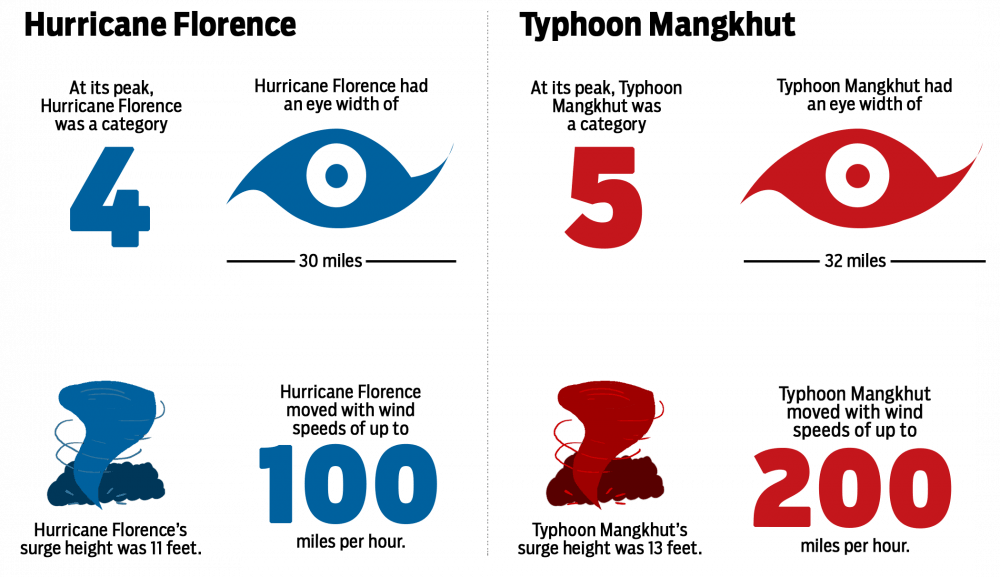Typhoon Mangkhut, which made landfall Sept. 14 in the Philippines, made sophomore Lucent Ting remember braving typhoons back in Hong Kong.
Windows were locked, instead of shut. Doors were shut. Nothing was left exposed to cause damages.
From Sept. 14 to Sept. 18, Hurricane Florence ravaged the United States. Meanwhile, from Sept. 14 to Sept. 16., Typhoon Mangkhut battered the Philippines and Hong Kong, among other places.
Ting said even though he is at IU and his younger brother is studying in London, they were not worried for their family when Mangkhut hit Hong Kong.
“We knew what was going on even though we weren’t there,” Ting said. “I knew that they were going to be safe.”
Ting said his parents do not live near the affected area.
At its strongest, Florence was a Category 4 hurricane. Though typhoons are measured using a different system in Hong Kong and the Philippines, Mangkhut would have been the equivalent of a Category 5 hurricane.
Cody Kirkpatrick, a lecturer in atmospheric science, said there is a small difference between typhoons and hurricanes. The key difference is location.
Kirkpatrick said in the Atlantic Ocean, the tropical cyclones are called hurricanes. However, if they form in the Western Pacific, they are called typhoons.
Even though they were near-identical storm types, both posed different forms of danger. Mangkhut had stronger winds, while Florence had heavier rainfall. Mangkhut was stronger than Florence when it reached landfall, Kirkpatrick said.
Wind is only one thing to consider when determining the strength of the storm, Kirkpatrick said.
Florence left 35 inches of rain when the center of the storm hit the coast.
“The winds do not tell the whole story,” Kirkpatrick said.
Kirkpatrick said a lot of storm management in the United States happens proactively. Many people in coastal and beachfront communities leave their homes before the storm hits, packing up their belongings and pets. But not everyone is given that opportunity.
“In some cases that is not possible,” Kirkpatrick said. “Some older populations in New Orleans for Katrina — the poor and people of color — many of them were not able to evacuate.”
However, Mangkhut was not a special occurrence for Hong Kong and the Philippines, Kirkpatrick said.
“They deal with troubles like tropical cyclones and typhoons all the time, that was pretty common,” Kirkpatrick said.
The Philippines last dealt with a typhoon this severe in 2013, when Typhoon Haiyan hit.
Chanh Kieu, an assistant professor of atmospheric science, said the Philippines get approximately 12 to 13 typhoons a year. The Philippines are most affected during the typhoon season.
“Almost all of the storms in the Western Pacific somehow influence the Philippines,” Kieu said.
Kieu said another factor in the preparation for typhoons and hurricanes is the accuracy of the storm tracking team.
Kirkpatrick said we may be seeing more of these storms as time continues, due to the increased thermal energy in the ocean. Hurricanes get their energy from warm ocean water, and records show temperatures have been increasing due to climate change.
“Based on that, the expectation would be, if there is more energy in the ocean available, it is likely that the hurricanes that develop could be stronger,” Kirkpatrick said.
However, Kieu said that may not be the case. The stronger storms may be a symptom of climate change, and while that theory should not be discredited, storms gaining strength could be caused by many different phenomena.




